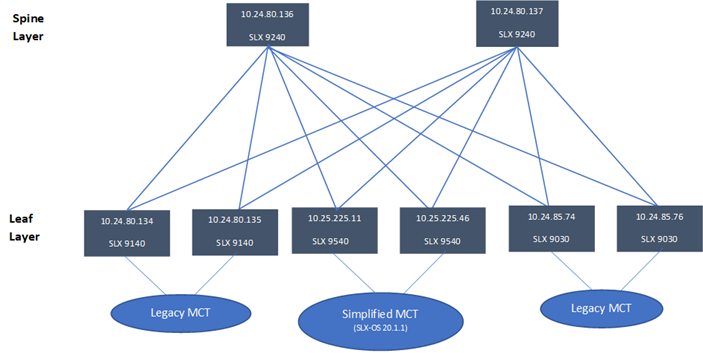Clos Fabric with Non-auto VNI Maps
Auto VNI simplifies the mapping IDs by using the VLAN ID as the VNI ID, for example VLAN 100 = VNI 100.
This method of mapping works well in environments where overlapping VLANs are not being used. However, if two different tenants are using VLAN 100, VNI 100 cannot be used by both. At this point, manual mapping of VLAN to VNI is required. Extreme Fabric Automation simplifies this process by allowing VNI ranges for tenants to automate “manual” mapping to work for overlapping VLANs.
The following figure shows a 3-stage Clos topology.
3-stage Clos topology

The following commands configured the 3-stage Clos
topology:
efa fabric create --name fabric1 efa fabric setting update --name fabric1 --vni-auto-map No efa fabric device add-bulk --spine 10.24.80.136 --border-leaf 10.25.225.11,10.25.225.46 --leaf 10.24.80.134-135,10.24.85.74,10.24.85.76 --username admin --password password --name fabric1 efa fabric configure --name fabric1
The following figure shows tenant constructs in the Clos Fabric.
Scope of tenant constructs


